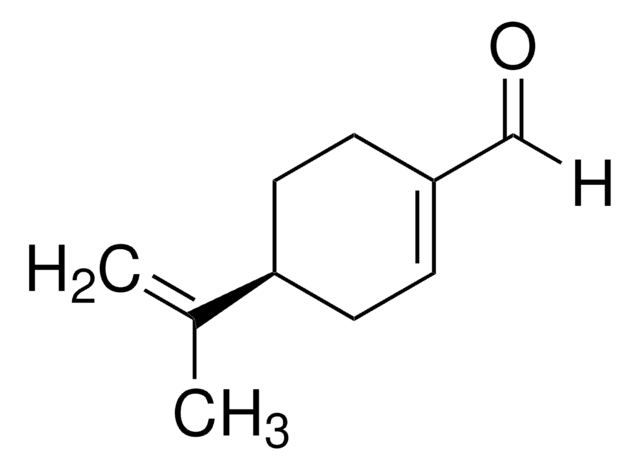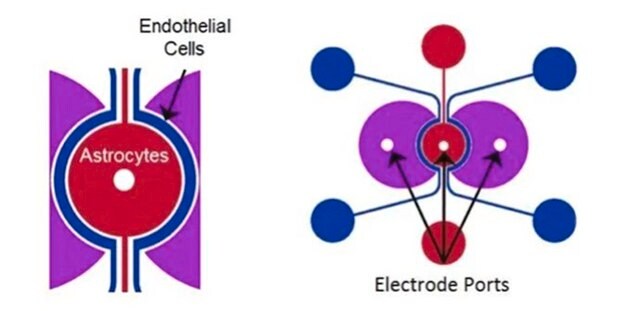W224707
L-Carveol, mixture of cis and trans
≥95%, FG
Synonyme(s) :
(−)-Carveol, mixture of isomers, p-Mentha-6,8-dien-2-ol
About This Item
Fragrance grade
Halal
Kosher
Produits recommandés
Source biologique
synthetic
Niveau de qualité
Qualité
FG
Fragrance grade
Halal
Kosher
Agence
follows IFRA guidelines
Conformité réglementaire
EU Regulation 1223/2009
EU Regulation 1334/2008 & 178/2002
FDA 21 CFR 117
FDA 21 CFR 172.515
Essai
≥95%
Activité optique
[α]22/D −115°, c = 1 in chloroform
Composition
contains IFRA restricted Carvone
Indice de réfraction
n20/D 1.496 (lit.)
pb
226-227 °C/751 mmHg (lit.)
Densité
0.958 g/mL at 25 °C (lit.)
Application(s)
flavors and fragrances
Documentation
see Safety & Documentation for available documents
Allergène alimentaire
no known allergens
Allergène de parfum
carvone
Propriétés organoleptiques
minty; herbaceous
Chaîne SMILES
CC(=C)[C@@H]1CC=C(C)C(O)C1
InChI
1S/C10H16O/c1-7(2)9-5-4-8(3)10(11)6-9/h4,9-11H,1,5-6H2,2-3H3/t9-,10?/m1/s1
Clé InChI
BAVONGHXFVOKBV-YHMJZVADSA-N
Vous recherchez des produits similaires ? Visite Guide de comparaison des produits
Catégories apparentées
Description générale
Mention d'avertissement
Warning
Mentions de danger
Conseils de prudence
Classification des risques
Eye Irrit. 2 - Skin Irrit. 2 - STOT SE 3
Organes cibles
Respiratory system
Code de la classe de stockage
10 - Combustible liquids
Classe de danger pour l'eau (WGK)
WGK 2
Point d'éclair (°F)
208.4 °F - closed cup
Point d'éclair (°C)
98 °C - closed cup
Équipement de protection individuelle
Eyeshields, Gloves, type ABEK (EN14387) respirator filter
Faites votre choix parmi les versions les plus récentes :
Déjà en possession de ce produit ?
Retrouvez la documentation relative aux produits que vous avez récemment achetés dans la Bibliothèque de documents.
Les clients ont également consulté
Notre équipe de scientifiques dispose d'une expérience dans tous les secteurs de la recherche, notamment en sciences de la vie, science des matériaux, synthèse chimique, chromatographie, analyse et dans de nombreux autres domaines..
Contacter notre Service technique









